
Croatia, officially the Republic of Croatia, is a country at the crossroads of Central and Southeast Europe on the Adriatic Sea. It borders Slovenia to the northwest, Hungary to the northeast, Serbia to the east, Bosnia and Herzegovina and Montenegro to the southeast, and shares a maritime border with Italy to the west and southwest. Its capital and largest city, Zagreb, forms one of the country's primary subdivisions, with twenty counties. Croatia has 56,594 square kilometres and a population of 4.07 million.

The Geography of Croatia is defined by its location—it is described as a part of Central Europe and Southeast Europe, a part of the Balkans and Mitteleuropa. Croatia's territory covers 56,594 km2 (21,851 sq mi), making it the 127th largest country in the world. Bordered by Bosnia and Herzegovina and Serbia in the east, Slovenia in the west, Hungary in the north and Montenegro and the Adriatic Sea in the south, it lies mostly between latitudes 42° and 47° N and longitudes 13° and 20° E. Croatia's territorial waters encompass 18,981 square kilometres (7,329 sq mi) in a 12 nautical miles wide zone, and its internal waters located within the baseline cover an additional 12,498 square kilometres (4,826 sq mi).
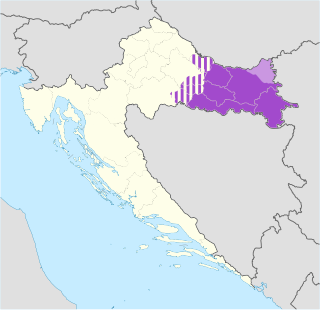
Slavonia is, with Dalmatia, Croatia proper and Istria, one of the four historical regions of Croatia. Taking up the east of the country, it roughly corresponds with five Croatian counties: Brod-Posavina, Osijek-Baranja, Požega-Slavonia, Virovitica-Podravina and Vukovar-Syrmia, although the territory of the counties includes Baranya, and the definition of the western extent of Slavonia as a region varies. The counties cover 12,556 square kilometres or 22.2% of Croatia, inhabited by 806,192—18.8% of Croatia's population. The largest city in the region is Osijek, followed by Slavonski Brod and Vinkovci.

Operation Storm was the last major battle of the Croatian War of Independence and a major factor in the outcome of the Bosnian War. It was a decisive victory for the Croatian Army (HV), which attacked across a 630-kilometre (390 mi) front against the self-declared proto-state Republic of Serbian Krajina (RSK), and a strategic victory for the Army of the Republic of Bosnia and Herzegovina (ARBiH). The HV was supported by the Croatian special police advancing from the Velebit Mountain, and the ARBiH located in the Bihać pocket, in the Army of the Republic of Serbian Krajina's (ARSK) rear. The battle, launched to restore Croatian control of 10,400 square kilometres of territory, representing 18.4% of the territory it claimed, and Bosnian control of Western Bosnia, was the largest European land battle since the Second World War. Operation Storm commenced at dawn on 4 August 1995 and was declared complete on the evening of 7 August, despite significant mopping-up operations against pockets of resistance lasting until 14 August.
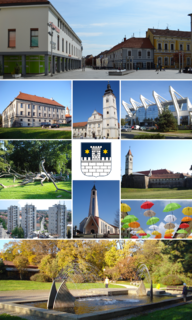
Čakovec is a city in northern Croatia, located around 90 kilometres north of Zagreb, the Croatian capital. Čakovec is both the county seat and the largest city of Međimurje County, the northernmost, smallest and most densely populated Croatian county.

Aloysius Viktor Stepinac was a Yugoslav Croat prelate of the Catholic Church. A cardinal, Stepinac served as Archbishop of Zagreb from 1937 until his death, a period which included the fascist rule of the Ustaše over the Axis puppet state the Independent State of Croatia from 1941 to 1945 during World War II. He was tried by the communist Yugoslav government after the war and convicted of treason and collaboration with the Ustaše regime. The trial was depicted in the West as a typical communist "show trial", and was described by The New York Times as biased against the archbishop. However, Professor John Van Antwerp Fine Jr. claims the trial was "carried out with proper legal procedure". In a verdict that polarized public opinion both in Yugoslavia and beyond, the Yugoslav authorities found him guilty on the charge of high treason, as well as complicity in the forced conversions of Orthodox Serbs to Catholicism. Stepinac advised individual priests to admit Orthodox believers to the Catholic Church if their lives were in danger, such that this conversion had no validity, allowing them to return to their faith once the danger passed. He was sentenced to 16 years in prison, but served only five at Lepoglava before being transferred to house arrest with his movements confined to his home parish of Krašić.

Josip Juraj Strossmayer was a Croatian politician, Roman Catholic bishop, and benefactor.
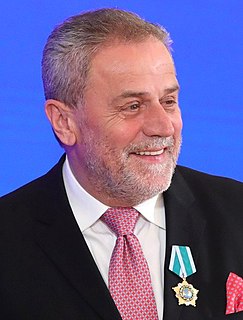
Milan Bandić was a Croatian politician and the longest-serving mayor of Zagreb, the capital of Croatia. Bandić was mayor almost continuously from 2000 to 2021, except during the time between his resignation in 2002 and the 2005 election. He was also suspended from exercising his powers and duties for several months after his 2014 arrest over a corruption scandal. Out of Bandić's multifaceted engagement in politics, the most noted part was his mayoralty of Zagreb, which followed the Croatian Democratic Union's (HDZ) first post-socialist period of government (1990–2000), and exacerbated many existing transitional problems in the city.

The Republic Square or the Square of the Republic is one of the central town squares and an urban neighborhood of Belgrade, located in the Stari Grad municipality. It is the site of some of Belgrade's most recognizable public buildings, including the National Museum, the National Theatre and the statue of Prince Michael.

Dorćol is an urban neighborhood of Belgrade, the capital of Serbia. It is located in Belgrade's municipality of Stari Grad.

The system of honours of the Republic of Croatia was established after the independence of Croatia in 1991. There are nineteen main decorations conferred since 2019, in addition to several other medals and awards.
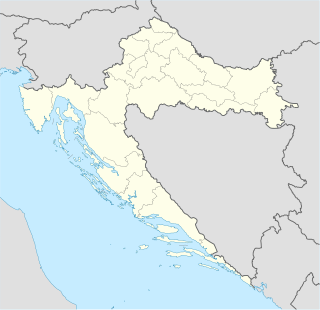
Operation Hurricane-91 was a military offensive undertaken by the Croatian Army against the Yugoslav People's Army and SAO Western Slavonia Territorial Defense Forces in the Sava River valley, in the region of Western Slavonia during the Croatian War of Independence. The operation began on 29 October 1991 and ended on 3 January 1992 when a nationwide ceasefire was signed to implement the Vance plan. The offensive was aimed at recapturing the region, in conjunction with two other HV offensives launched against SAO Western Slavonia in the north of the region within days.
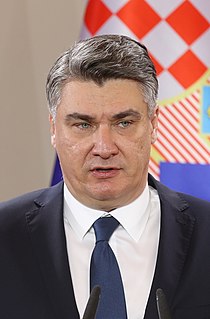
Zoran Milanović is a Croatian politician serving as President of Croatia since 19 February 2020. Prior to assuming the presidency, he was prime minister from 2011 to 2016 and president of the Social Democratic Party from 2007 to 2016.

Franciscan Province of Bosna Srebrena is a province of the Franciscan order of the Catholic Church in Bosnia and Herzegovina. Their headquarters are currently in Sarajevo.

The Grand Order of King Tomislav, or officially the Grand Order of King Tomislav with Sash and Great Morning Star, is the highest state order of Croatia. It is usually awarded to top foreign officials for their contribution to the improvement of Croatia's good standing internationally as well as achievements in developing international relations between Croatia and their respective countries. It is awarded by the President of Croatia. The order has one class. It is named after King Tomislav of Croatia.

Split is Croatia's second-largest city and the largest city in the Dalmatia region. It lies on the eastern shore of the Adriatic Sea and is spread over a central peninsula and its surroundings. An intraregional transport hub and popular tourist destination, the city is linked to the Adriatic islands and the Apennine Peninsula.

Stjepan Vukčić Kosača, was the most powerful Bosnian nobleman whose active political career spanned the crucial three decades of Bosnian history, from 1435 to 1465. During this period, three kings succeeded to the Bosnian throne, Tvrtko II, Thomas (Tomaš), Stephen Tomašević (Stjepan Tomašević), one anti-king, Radivoj, the older brother of King Thomas, and the county's fate was sealed by Ottoman conquest.
The twelve noble tribes of Croatia, also known as twelve noble families of Croatia, was a medieval institution of nobility, alliance, or narrow noble community in the Kingdom of Croatia, which can be traced back at least to the 14th century, while the first mention of the institution was in the Pacta conventa document, which is supposedly a later copy of the original from 1102. Regardless of possible earlier references, the first verifiable mention dates from 1350, while the last from 1459. It is considered that by socio-economic power it was composed of lower and middle nobility, witch had a privilege of retain and use of heirdom, tax exemption, and limited military obligations to the king. The twelve tribes are Čudomirić, Gusić, Kačić, Kukar, Jamomet, Lasničić, Lapčan and Karinjan, Mogorović, Poletčić, Snačić, Šubić, and Tugomirić.

























